Estimated reading time 11 minutes, 35 seconds.
According to Ontario’s Ministry of Northern Development, Mines, Natural Resources and Forestry (NDMNRF), there were 1,198 forest fires inside the province’s fire region during 2021’s fire season (April 1 to Oct. 31). That was almost twice the 607 fires experienced during 2020, and 43 percent higher than the 10-year average of 838.
Forest fires have long provided an annual threat to northern Ontario communities, wildlife, property, infrastructure, and natural resources. Today, the province operates a fleet of fixed- and rotary-wing aircraft that supports numerous important missions, including the identification and suppression of wildland fires. Before discussing the current operations, it is worthwhile to briefly review how this group evolved.
That Was Then
A century ago, the Government of Ontario’s Department of Lands and Forests (DLF) decided that it would be useful to survey and photograph timber lands from the air. The aircraft utilized would also be tasked with monitoring forests for wildfires and for transporting the personnel and equipment required to extinguish fire outbreaks. During the summer of 1923, the DLF contracted Laurentian Air Service to fly those missions. The provincial government later decided to bring those operations in house, so in early 1924 it created the Ontario Provincial Air Service (OPAS). The new operation was based on the north shore of the St. Mary’s River at Sault Ste. Marie. From April 15 until May 29 that year, OPAS acquired 13 Curtiss HS-2L biplane flying boats. They were sequentially registered as G-CAOA through to G-CAOM.
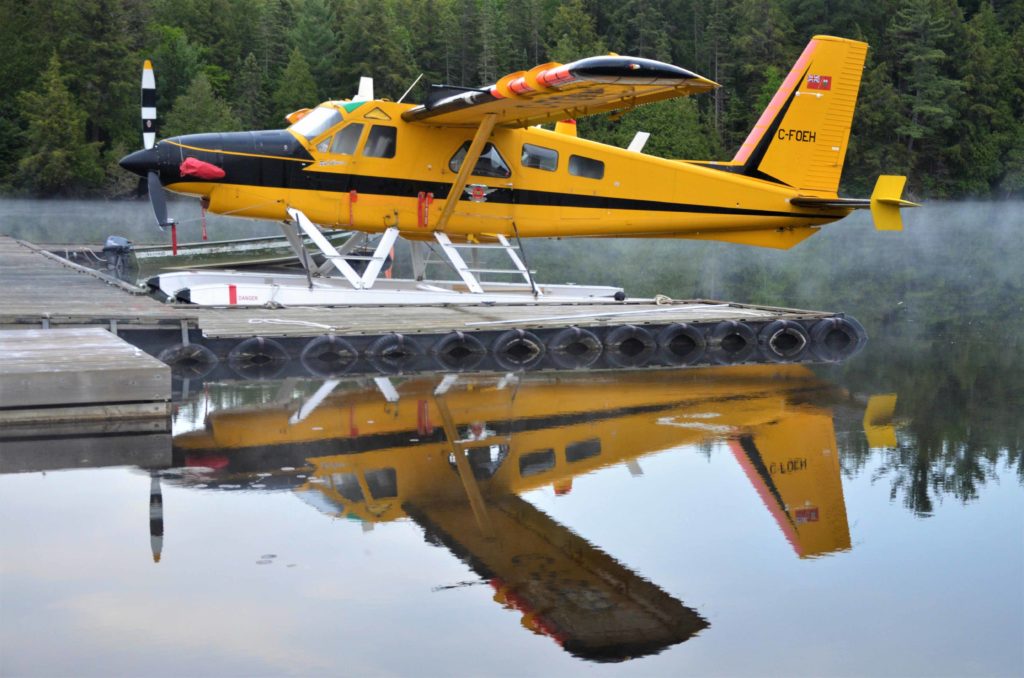
The composition of the fleet would change as the decades passed, as would the names and acronyms of the departments, ministries, and organizations responsible for the fleet’s operation. Half a century ago, the DLF’s fleet was comprised of 44 aircraft. According to the Dec. 31, 1971, edition of the Canadian Civil Aircraft Register, it included one DHC-2 Mk. I Beaver, 27 DHC-2 Mk. III Turbo-Beavers, 10 DHC-3 Otters, four DHC-6 Twin Otters, one Beech 60 Duke, and one DHC-built Grumman CS2F-2 Tracker.
This Is Now
Today, the NDMNRF’s Aviation, Forest Fire and Emergency Services (AFFES) division is responsible for operating the Ontario government’s 28 aircraft. While they are well known for their forest fire patrols and suppression work, those aircraft also support special provincial resource management programs. They include aerial wildlife surveys (moose, caribou, deer, bear, etc.); fish stocking; reconnaissance; radio telemetry monitoring; natural resource-related regulatory compliance monitoring and enforcement; animal capture and banding; wildlife transfers; rabies vaccination distribution; aerial photography; and remote sensing. As well, the aircraft fly human-related missions that are associated with mercy flights/medical evacuations, search-and-rescue, and emergency management support.
The AFFES fleet of 20 fixed-wing aircraft and eight helicopters is dispatched by the Aviation Services Centre in Sault Ste. Marie. During the fire season, these aircraft are based at seven strategic locations across northern Ontario: Dryden, Muskoka, Sault Ste. Marie, Smoke Lake (in Algonquin Provincial Park), Sudbury, Thunder Bay, and Timmins.
See the Government of Ontario’s aircraft fleet below.
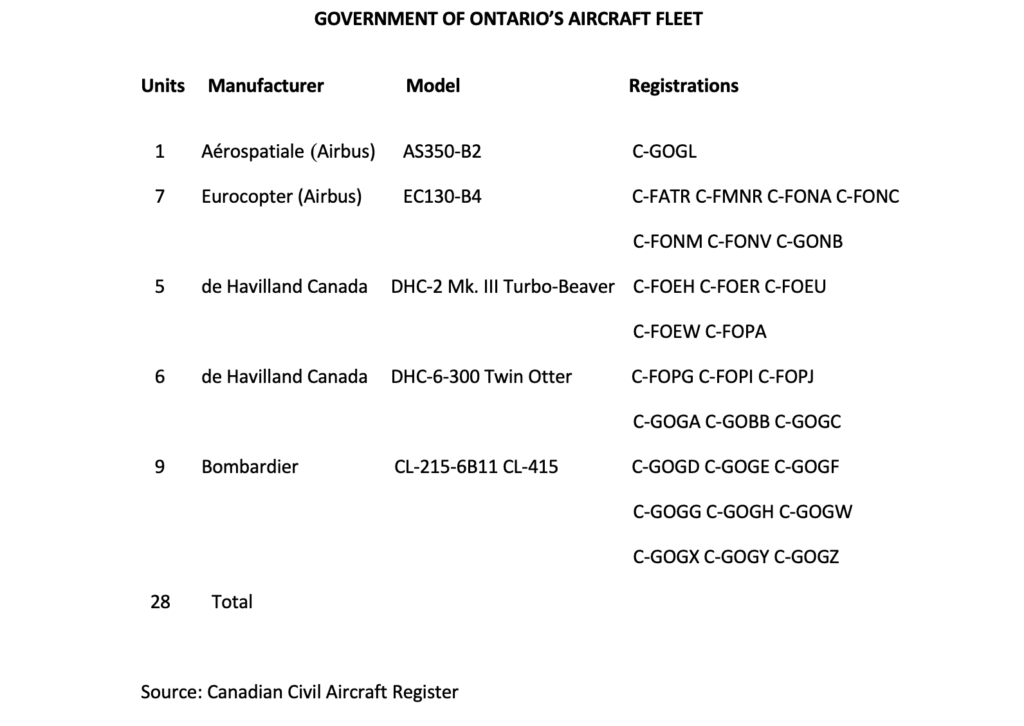
To learn more about the operations, Skies posed the following questions to the AFFES team:
Skies: During a typical year (365 days), what percentage of the total hours flown by the fleet are related to fire spotting and suppression?
AFFES: The total number of hours flown for each aircraft during any given year, not just fire season, is highly dependent on the demand for aerial support for ministry operations including activities such as fish stocking, fire response, and aerial wildlife surveys, for example. It’s difficult to determine the total percentage of hours flown related strictly to fire response, which includes operations such as detection, suppression, and personnel/equipment transport, since that percentage would be reflective of how busy the fire season is in any given year and can vary accordingly.
Skies: Are the helicopters utilized as bird dog aircraft that guide the waterbombers to the target?
AFFES: No. Rotary-wing aircraft can be utilized in fire suppression operations such as belly-tankers or bucketing helicopters, and are used to transport personnel and cargo related to fire response.

Skies: How many outside contractors operate bird dog aircraft
and/or waterbombers?
AFFES: Currently the Ministry (NDMNRF) works with one private sector contractor for bird dog operations during the fire season. Ontario also proudly participates in a Mutual Aid Resource Sharing Agreement with provincial, territorial, and federal partners to share personnel and other resources, including aircraft, during periods of escalated wildland fire activity. The Canadian Interagency Forest Fire Centre (CIFFC) brokers the movement of personnel and equipment resources when needed nationally. Additionally, rotary-wing aircraft can be hired to work as belly-tankers or bucketing helicopters. Helicopter contractors vary from year to year based on need during the fire season.
Skies: Is night flying ever performed while fighting fires, or are missions strictly daylight VFR?
AFFES: When engaged in aerial firefighting operations, the NDMNRF utilizes its fleet of CL-415 and Twin Otter waterbombing aircraft under daytime visual flight rule (VFR) conditions only. We do not conduct waterbombing operations at night.
Skies: How large is your hangar at Sault Ste. Marie (CYAM) and how many aircraft can it accommodate?
AFFES: The hangar is approximately 24,000 square feet and accommodates four CL-415s.
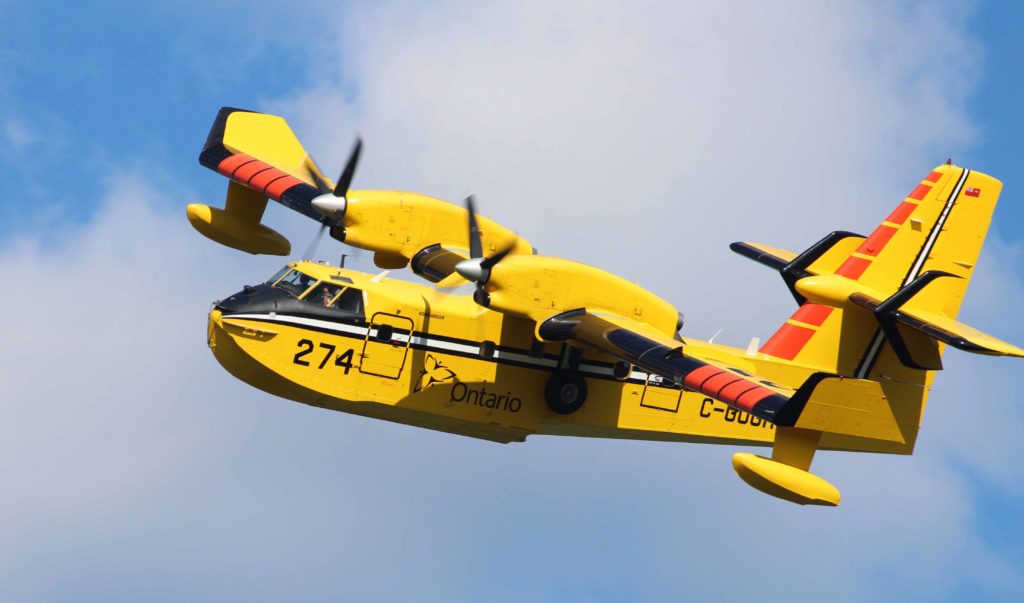
Skies: Where are the 28 aircraft based during the year?
AFFES: Aircraft are pre-positioned based on the weather forecast and fire hazard indices throughout the fire season. The program needs to be highly flexible and the location of the aircraft can change daily based on requirements. We have 14 Fire Management Headquarters across the province. These include:
- The Northeast Region; they are at Chapleau, Cochrane, Haliburton, North Bay, Sudbury, Timmins, and Wawa; and
- The Northwest Region; they are at Dryden, Fort Frances, Greenstone, Kenora, Red Lake, Sioux Lookout, and Thunder Bay.
Skies: Since March 2013, AFFES has operated a Mechtronix (now TRU Simulation + Training) CL-415 simulator in a dedicated 6,700-square-foot facility at Sault Ste. Marie. For how many hours per year is this Level 6 flight training device used by AFFES crews and others?
AFFES: Each AFFES pilot’s total number of hours annually is an accumulated total of 24 hours over a period of four to five days. The total hours for other users is dependent on their specific operator training program requirements.
Skies: How many members make up the AFFES team?
AFFES: The size of the AFFES team can fluctuate during the year depending on program needs and seasonal staff. A typical count is 140 full-time staff and 24 seasonal staff.
Skies: Has there been much turnover within the team during the past couple of years?
AFFES: The turnover rate is averaging the same as the aviation industry as a whole.
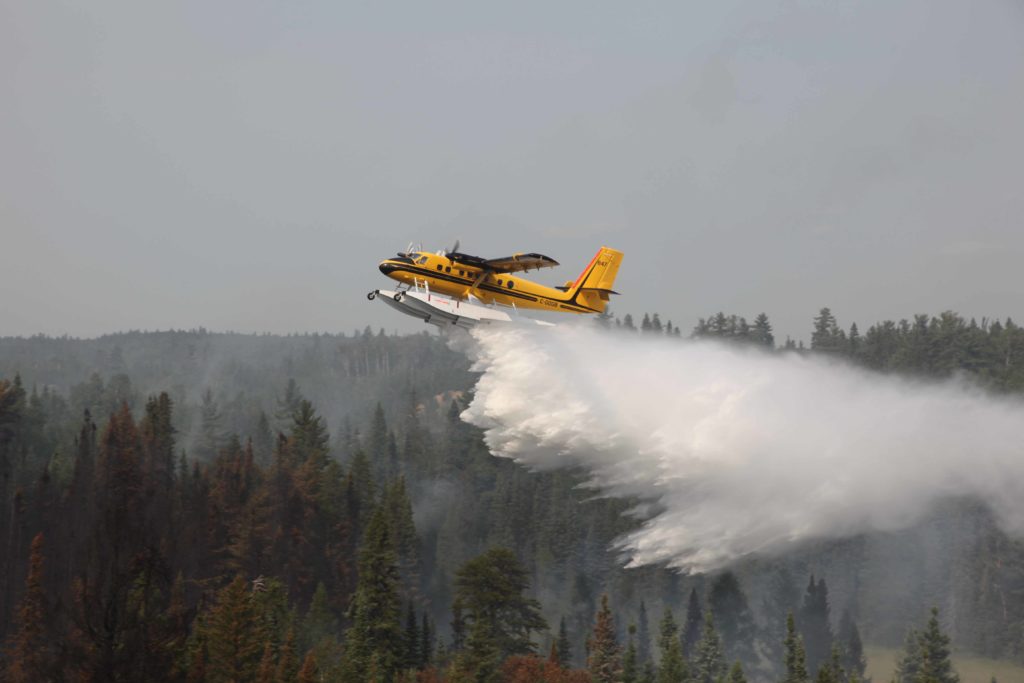
Skies: Where do you recruit your talent?
AFFES: Open jobs are posted on the Ontario government’s job board. Occasionally, when the program is hiring for a large pilot pool, we will place an ad in industry publications to attract more attention.
Skies: What are the minimum requirements for aspiring pilots and AMEs?
AFFES: All pilots require a valid Category 1 medical, ability to travel out of province, possession of a valid passport or the ability to acquire one, a valid restricted radio telephone operator’s certificate, and the ability to pass Canadian and U.S. transport agency security screening. As well, each aircraft type has minimum requirements for flight hours, hours on floats, and instrument ratings.
All aircraft maintenance engineers require a valid M1 or M2 license, a valid restricted radio telephone operator’s certificate, a G driver’s license, and the ability to travel out of province.
SKIES: What training programs are required for your pilots in preparation for the upcoming fire season?
AFFES: All pilots require initial training or recurrent training for their aircraft type. Each pilot must be certified as competent or proficient in order to be approved to fly.
SKIES: What maintenance work is carried out in preparation for the busy summer season?
AFFES: Aircraft must be operational and ready for the fire season. Starting from the end of the fire season, and continuing over the winter months, each aircraft undergoes intensive maintenance and inspections in accordance with manufacturer requirements and approved maintenance schedules.
Adapting & Innovating
This important group has been serving Ontario for 98 years. What might the future bring? Skies asked Chris Cuthbertson, director of AFFES, if he expects the unit’s role to change over the next decade. He noted that “the industry is always changing, and we must change with it to ensure continued innovation and progress to best support and protect Ontario’s people and natural resources.”
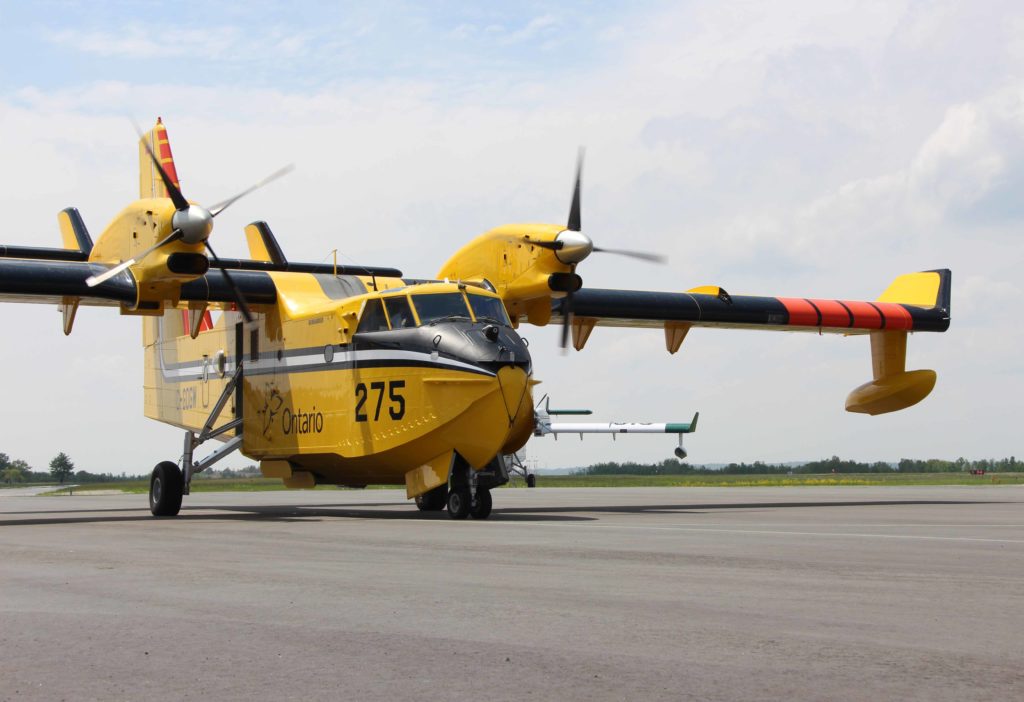
Given that the AFFES fleet has traditionally featured Canadian designed and built aircraft, could the De Havilland Canada Dash 8-400 be an appropriate future addition to the team?
“The future could see the fleet change based on current and future needs,” concluded Cuthbertson. “No aircraft are ruled out.”
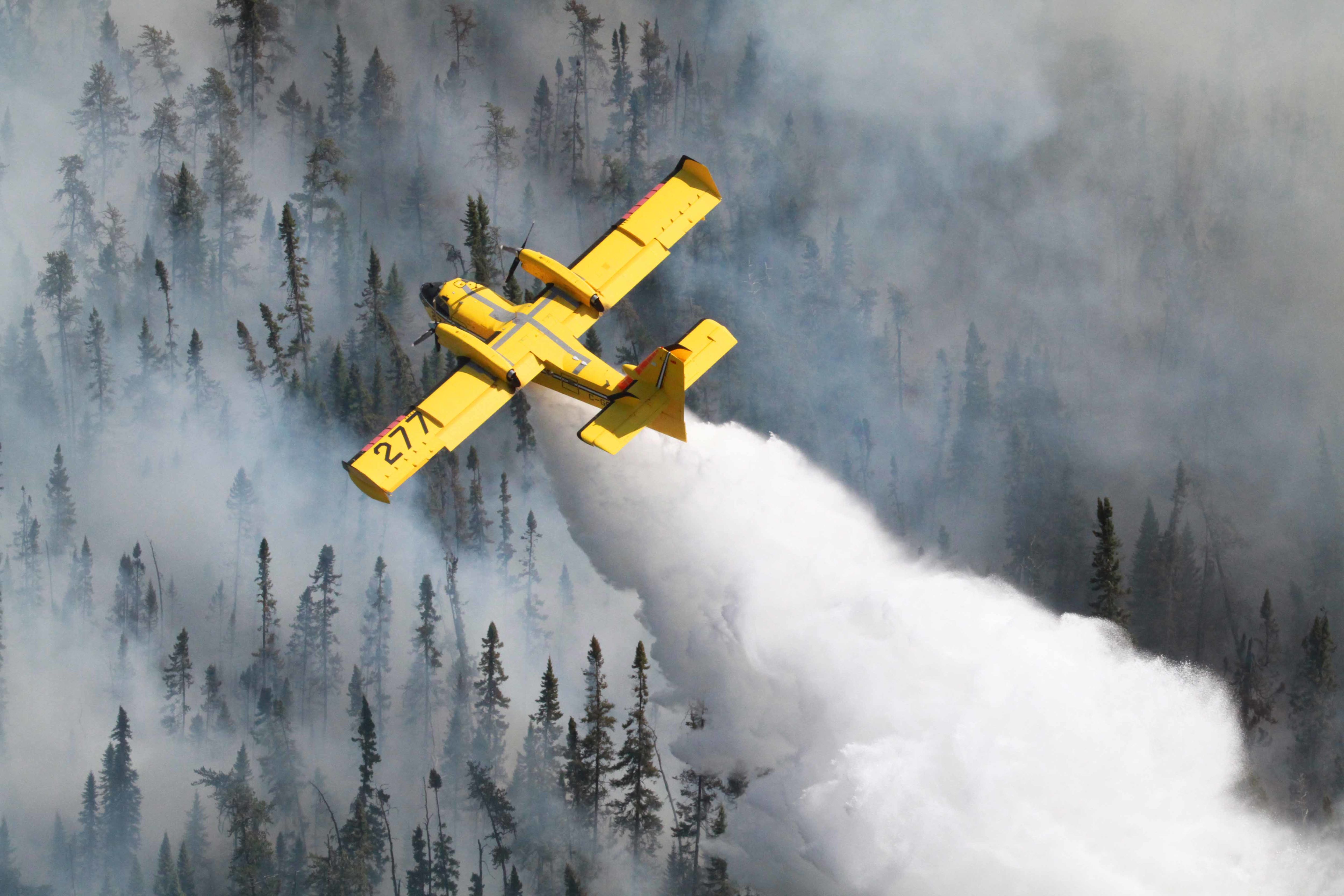

I just found this post, while researching a dehavilland Beaver. Great article, lots of great historical information. You listed the registration numbers, of the initial 13 Curtis HS-2L Bi-plane flying boats, G-CAOA to G-CAOM. Then provided a 2nd list, with all the current aircraft models and registrations. Is there a recorded list of the 1971 era’s aircraft registrations? I am also interested in photos, of these earlier aircraft.